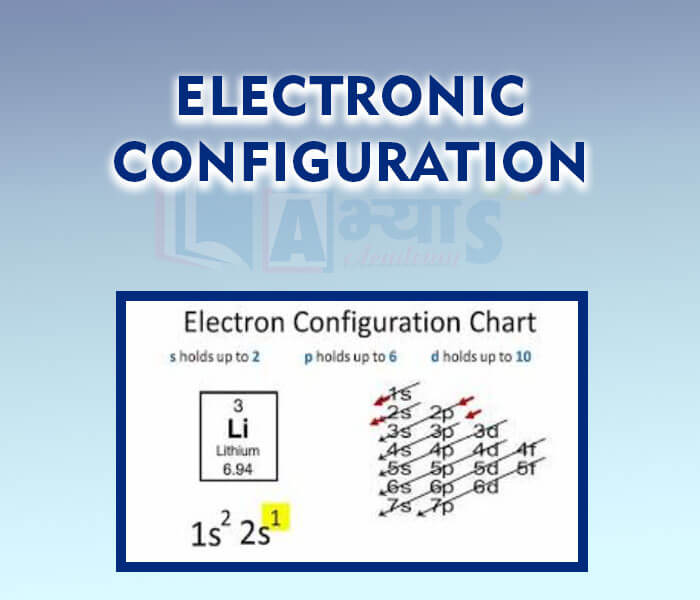Electronic Configuration







Electronic Configuration
Distribution of electrons in different orbits (shells): The distribution of electrons into different orbits of an atom was suggested by Bohr and Bury. For writing the number of electrons in different levels or shells, some rules are followed. These are:
1. The maximum number of electrons present a shell is given by the formula where, n is the orbit number or energy level 1, 2, 3….Therefore, the maximum numbers of electrons in different shells are as follows:
2. The maximum number of electrons that can be accommodated in the outermost orbit is 8. This is a very important rule and is sometimes called the octet rule. According to this rule, the presence of 8 electrons in the outermost shell makes the atom very stable.3. Electrons are not accommodated in a given shell, unless the inner shells are filled (i.e. the shells are filled in a stepwise manner).
The maximum electron present in L-shell are ____________. | |||
| Right Option : B | |||
| View Explanation | |||
The maximum electron present in N-shell are ____________. | |||
| Right Option : C | |||
| View Explanation | |||
Mass of total positive charge present in an atom is 55110 times to that of mass of electron. Write the electronic configuration of the element. | |||
| Right Option : C | |||
| View Explanation | |||
Students / Parents Reviews [10]
My experience with Abhyas is very good. I have learnt many things here like vedic maths and reasoning also. Teachers here first take our doubts and then there are assignments to verify our weak points.

Shivam Rana
7thBeing a parent, I saw my daughter improvement in her studies by seeing a good result in all day to day compititive exam TMO, NSO, IEO etc and as well as studies. I have got a fruitful result from my daughter.

Prisha Gupta
8thA marvelous experience with Abhyas. I am glad to share that my ward has achieved more than enough at the Ambala ABHYAS centre. Years have passed on and more and more he has gained. May the centre flourish and develop day by day by the grace of God.

Archit Segal
7thAbout Abhyas metholodology the teachers are very nice and hardworking toward students.The Centre Head Mrs Anu Sethi is also a brilliant teacher.Abhyas has taught me how to overcome problems and has always taken my doubts and suppoeted me.

Shreya Shrivastava
8thIt was good as the experience because as we had come here we had been improved in a such envirnment created here.Extra is taught which is beneficial for future.

Eshan Arora
8thIt was a good experience with Abhyas Academy. I even faced problems in starting but slowly and steadily overcomed. Especially reasoning classes helped me a lot.

Cheshta
10thIt has a great methodology. Students here can get analysis to their test quickly.We can learn easily through PPTs and the testing methods are good. We know that where we have to practice

Barkha Arora
10thAbhyas is a complete education Institute. Here extreme care is taken by teacher with the help of regular exam. Extra classes also conducted by the institute, if the student is weak.

Om Umang
10thAbhyas Methodology is very good. It is based on according to student and each child manages accordingly to its properly. Methodology has improved the abilities of students to shine them in future.

Manish Kumar
10thI have spent a wonderful time in Abhyas academy. It has made my reasoning more apt, English more stronger and Maths an interesting subject for me. It has given me a habbit of self studying
